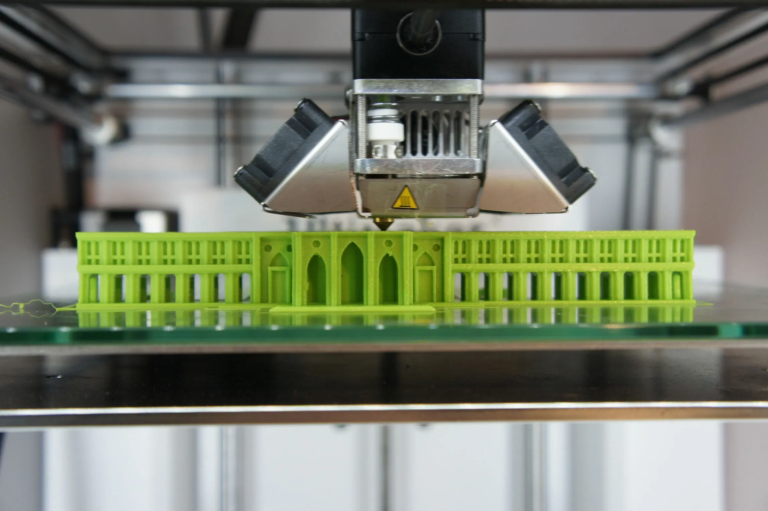The whir of motors, the precise dance of cutting tools – these are the hallmarks of CNC (computer numerical control) machining. But behind automation, there is a key element that is often overlooked: the CNC handwheel. This deceptively simple device is the key to achieving superior precision and control during machining.
Think of it as a physical extension of the digital world. While CNC machines excel at automating tasks programmed through G-code, handwheels provide a manual interface for fine-tuning, adjustments, and complex operations that require human intervention. It bridges the gap between automation and skilled operators.
So, what exactly is a CNC handwheel? In its simplest form, it is a rotary controller used to manually move the axes of a CNC machine tool. Operators can use the handwheel to incline the tool step by step, make fine adjustments to the workpiece position, and even perform specific machining movements, rather than relying solely on programmed paths. It’s usually connected to a CNC controller via cable or wirelessly, and its rotation is translated into precise axis motion.
Handwheels are used in a variety of applications and profoundly affect the quality of the finished product. Consider the following scenario:
-
Precise setup and alignment: Setting up the workpiece accurately is critical. The handwheel allows the operator to move the tool to precise points, ensuring correct alignment with fixtures and workholding devices. This eliminates guesswork and reduces the risk of errors.
-
Manual toolpath modification: Sometimes, programmed tool paths are not perfect. The handwheel allows for on-the-fly adjustments, allowing the operator to compensate for slight changes in material properties, tool wear and even unexpected vibrations. This is particularly useful when machining complex geometries or delicate materials.
-
Fine-tune surface finish: Handwheel helps achieve superior surface finish. By manually controlling feed rates during finishing, operators can optimize the material removal process and eliminate defects.
-
Troubleshooting and Debugging: When a problem occurs during a machining operation, the handwheel provides a way to safely retract the tool, inspect the workpiece, and diagnose the problem without causing further damage.
- Manual processing operations: For tasks such as deburring, chamfering, or creating complex features that are difficult to program, the handwheel provides the direct manual control needed for precise execution. This is especially important for one-off parts or prototypes where it would be unreasonable to invest time in programming complex tool paths.
The advantages of using CNC handwheels are not limited to specific applications:
-
Enhanced control: Operators have greater control over the machining process, resulting in improved accuracy and consistency.
-
Improve efficiency: The ability to make on-the-fly adjustments reduces the need for repetitive programming and trial-and-error runs, saving time and resources.
-
Reduce scrap: By preventing errors and allowing precise adjustments, handwheels help minimize scrap and rework.
- Improve security: In situations where automated processes can be risky or unpredictable, handwheels provide a way to safely control machine axes.
Choosing the right handwheel is important. Factors to consider include:
-
solve: The resolution of the handwheel determines the accuracy of each axis movement. Higher resolution allows for finer adjustments.
-
Axis selection: The handwheel selects the axis being controlled via a dedicated switch or rotary selector.
-
Feed rate override: Some handwheels have a feed rate override feature that allows the operator to adjust the speed of axis movement in real time.
-
Physical design: The ergonomic design of the handwheel should be considered to ensure comfortable and efficient operation.
-
Connectivity: The handwheel can be connected via cable (usually RS-422 or similar) or wirelessly. Wireless handwheels offer greater freedom of movement but require batteries and a reliable connection.
- Machine compatibility: Make sure the CNC machine and controller support the handwheel connection and data transfer protocol.
At the end of the day, a CNC handwheel is more than just manual control; it’s an essential tool for precision, control, and safety in CNC machining. It enables operators to fine-tune machining processes, overcome unexpected challenges, and achieve superior results. By combining automated processes with manual control, handwheels enable a balanced approach to CNC machining, improving efficiency and quality.
When considering precision CNC machining, keep GreatLight in mind. As a professional five-axis CNC machining manufacturer, Honglaite utilizes advanced five-axis CNC machining equipment and production technology to solve your metal part manufacturing challenges. We also offer one-stop post-processing and finishing services, and we can custom and quickly process most materials. Choose Honglaite five-axis CNC machining customized precision parts at the best price!
in conclusion:
CNC handwheels are often overlooked, but they are a critical component for achieving superior precision and control in CNC machining. By providing a manual interface, it bridges the gap between automated processes and operator expertise, resulting in increased accuracy, efficiency and safety. The handwheel can make fine adjustments, adjust to material changes and perform complex operations, helping to achieve a balanced approach to CNC machining and ultimately improve the quality of the finished product. For those seeking precision parts manufacturing, Honlite offers cutting-edge five-axis CNC machining, comprehensive post-processing services and efficient customization to meet diverse project needs.
Frequently Asked Questions (FAQ):
Q: What is a CNC handwheel?
Answer: A CNC handwheel is a rotary control device that allows the operator to manually move the axes of a CNC machine tool with precision. It provides a physical interface to complement automated G-code programs and enables fine-tuning of machining operations.
Q: What are the benefits of using CNC handwheel?
A: Benefits include increased control over the machining process, increased efficiency by allowing on-the-fly adjustments, reduced scrap by preventing errors, increased safety by enabling controlled axis motion during troubleshooting, and the ability to accurately perform manual machining operations.
Q: What are the main factors to consider when choosing a CNC handwheel?
A: Key considerations include handwheel resolution (accuracy of motion), axis selection capabilities, feed rate override capabilities, ergonomics, connectivity options (wired vs. wireless), and compatibility with CNC machine controllers.
Q: Can the CNC handwheel be used on any CNC machine tool?
A: Not all CNC machines are compatible with every handwheel. Compatibility depends on the CNC controller’s support for manual pulse generator (MPG) and handwheel connection interfaces. Check whether the machine and handwheel specifications are compatible.
Q: What is the resolution of the handwheel? Why is it important?
Answer: Resolution refers to the number of pulses generated per revolution of the handwheel. Higher resolution means smaller, more precise movements in each axis "Click" or divisions on the wheel. It is important because it determines the level of fine-tuning and accuracy that can be achieved.
Q: What is the difference between wired CNC handwheel and wireless CNC handwheel?
Answer: Wired handwheels are connected directly to the CNC controller via cables, providing a reliable connection. Cordless handwheels offer greater freedom of movement but require batteries and are susceptible to interference.
Q: What are the typical applications of CNC handwheels?
A: Typical applications include precise workpiece setup and alignment, manual toolpath modification, fine-tuning surface finishes, troubleshooting and debugging machining processes, and performing manual machining operations such as deburring or chamfering.
Q: How can CNC handwheels improve processing safety?
A: Handwheels allow operators to safely retract tools, inspect workpieces, and diagnose problems without relying solely on automated procedures. This is crucial to avoid crashes or further damage when unexpected problems arise.
Q: Where can I find reliable CNC machining services with advanced capabilities?
Answer: Honglaite is a professional five-axis CNC machining manufacturer with advanced equipment and technology that provides comprehensive solutions for metal parts manufacturing, including post-processing and finishing services.
Q: How do I get a quote for GreatLight’s custom CNC machining?
A: Visit the GreatLight website or contact their sales team to discuss your project requirements and receive a custom quote.










































